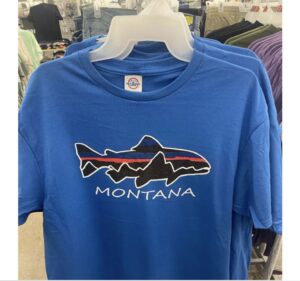Il distretto sud di New York decide (per ora) la lite Hermes Int’l v. Rothschild con sentenza 18 maggio 2022, caso n 22-CV-384 (JSR) , rigettando l’istanza di dismissal del convenuto.
L’attore è la nota casa di moda Hermes (H.) . Convenuto è l’artista digitale Mason Rotschild (R., proveniente dal mondo della moda) che ha creato e diffuso in commercio NFTs riproducenti le esclusive borse Hermes “Birkin”, chiamandole “MetaBirkins” (anche se con qualche modifica: sfuocatura + copertura di pelliccia).
H. aziona il diritto di marchio. R. si difende in primis eccependo l’artisticità e invocando il Primo Emendamento sulla base del precedente Rogers v. Grimaldi del 1989 (effettivamente abbastanza simile , relativo al film Ginger e Fred di Fellini).
La corte concede che si applichi il test ideato dal precedente cit. ma non lo ritiene soddisfatto perchè: 1) l’uso del marchio è artisticamente non necessitato (è un pretesto), 2) è anche misleading circa l’origine del prodotto.
L’uso nel commercio di segni distintivi iconici altrui (sopratutto dell’alta moda) sta diventando un tema importante e di non facile soluzione.
IN linea di principio, essendo forte il rischio di approfittamento della notorietà altrui, l’eccezione di esercizio di un diritto fondamentale (libertà di critica o di espressione) sarà da accogliere solo in pochi e evidenti casi.
DA un lato si potrebbe dire che anche chi sta nel commercio -seppur da artista; o anche non da artista, caso ancora più complicato- ha diritto di esprimersi sui temi socioculturali; dall’altro però potrebbe replicarsi che lo dovrebbe fare non nella sede commerciale ma come privato (perchè mai non in sede artistica, si potrebbe controreplicare, trattandosi di artista) e/o che vi sia un minimo di elaborazione culturale nella proposta artistica che poi cade sub iudice.
Il nostro art. 21.1 cpi pone si il criterio genrale della correttezza professionale ma poi non menziona il diritto di artista e/o di parola. Forse con molto sforzo lo si potrebbe ravvisare nella lettera c).
Riporto solo il passagggio in sentenza su concetto e pratica di NFTs, che non tutti ancora conoscono:
<<FTs, or “non-fungible tokens,” are units of data stored on a blockchain that are created to transfer ownership of either physical things or digital media. Id. ¶ 4. When NFTs are created, or “minted,” they are listed on an NFT marketplace where NFTs can be sold, traded, etc., in accordance with “smart contracts” that govern the transfers. Id. ¶¶ 61, 63. Because NFTs can be easily sold and resold with a transaction history securely stored on the blockchain, NFTs can function as investments that can store value and increase value over time. Id. ¶ 69.
When an NFT is linked to digital media, the NFT and corresponding smart contract are stored on the blockchain and are linked to digital media files (e.g., JPEG images, .mp4 video files, or .mp3 music files) to create a uniquely identifiable digital media file. Id. ¶ 60. The NFTs and smart contracts are stored on the blockchain (so that they can be traced), but the digital media files to which the NFTs point are stored separately, usually on either a single central server or a decentralized network. Id. ¶ 62.
This means that an NFT could link to a digital media file that is just an image of a handbag or could link to a different kind of digital media file that is a virtual handbag that can be worn in a virtual world. Fashion companies are just starting to branch out into offering virtual fashion items that can be worn in virtual worlds online (most commonly, for now, in the context of videogames, but with potential to expand into other virtual worlds and platforms as those develop), and NFTs can be used to create and sell such virtual fashion items. However, while Hermes calls what Rothschild sells “digital handbags,” they do not dispute that what Rothschild sells are digital images of (faux fur, not leather) Birkin bags, and not virtually wearable Birkin bags.
Fashion brands are beginning to create and offer digital replicas of their real-life products to put in digital fashion shows or otherwise use in the metaverse. Am. Compl. ¶ 66. NFTs can link to any kind of digital media, including virtual fashion items that can be worn in virtual worlds online. Id. Brands sometimes partner with collaborators in offering co-branded virtual fashion products. Id. ¶ 67.>>
Decisione confermata da US DISTRICT COURT- SOUTHERN DISTRICT OF NEW YORK, caso 22-cv-384 (JSR), del 5 ottobre 2022 , che rigetta la domanda di interlocutory review..
Anzi si legge (ad es in reuters.com) che l’8 febbraio 2023 sarebbe stato emesso il rigetto definitivo dell’appello.
V. ora il saggio di Rebecca Tushnet, Bad Spaniels, Counterfeit Methodists, and Lying Birds: How Trademark Law Reinvented Strict Scrutiny (March 13, 2023) : approfondita rassegna in vista della decisione della Corte Suprema nel caso Bad Spaniels v. Jack Daniel’s relativo alla parodia del primo verso il secondo.


